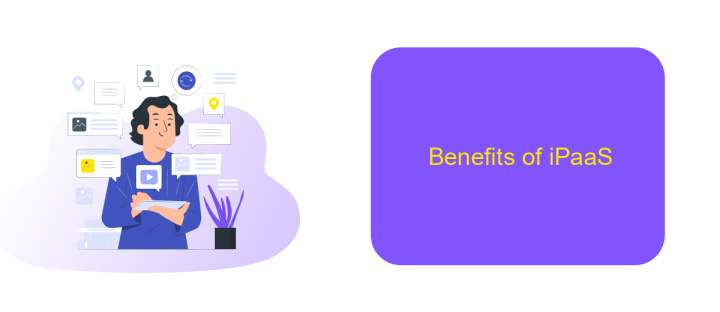aPaaS vs iPaaS
In the ever-evolving landscape of cloud computing, understanding the differences between Application Platform as a Service (aPaaS) and Integration Platform as a Service (iPaaS) is crucial for businesses seeking to optimize their IT infrastructure. This article delves into the core functionalities, benefits, and use cases of aPaaS and iPaaS, helping you make informed decisions for your enterprise needs.
Introduction
In the rapidly evolving landscape of cloud computing, understanding the differences between Application Platform as a Service (aPaaS) and Integration Platform as a Service (iPaaS) is crucial for businesses. Both platforms offer unique advantages and cater to different needs, making it essential to choose the right one based on your organization's requirements.
- aPaaS: Focuses on providing a development and deployment environment for applications. It simplifies the process of creating, testing, and deploying applications.
- iPaaS: Specializes in integrating various applications, data, and processes. It streamlines the connectivity between disparate systems, ensuring seamless data flow.
While aPaaS is ideal for companies looking to accelerate application development, iPaaS is indispensable for those needing robust integration solutions. Services like ApiX-Drive exemplify the capabilities of iPaaS by offering user-friendly tools to automate and manage integrations, enhancing operational efficiency. Understanding these platforms will help you make informed decisions, optimizing your tech stack for better performance and scalability.
Comparison Table

When comparing aPaaS (Application Platform as a Service) and iPaaS (Integration Platform as a Service), it's essential to understand their core functionalities. aPaaS focuses on providing a platform for application development, offering tools and services to design, develop, and deploy applications swiftly. On the other hand, iPaaS is designed to facilitate the integration of various applications and systems, enabling seamless data flow and connectivity across different platforms. This makes iPaaS particularly useful for businesses that rely on multiple software solutions that need to communicate with each other efficiently.
For instance, ApiX-Drive is a notable iPaaS that simplifies the integration process by providing a user-friendly interface and pre-built connectors for numerous applications. This allows businesses to automate workflows without extensive coding knowledge. In contrast, aPaaS platforms typically provide comprehensive development environments, including integrated development environments (IDEs), APIs, and other tools necessary for building custom applications from scratch. Thus, while aPaaS is ideal for creating new applications, iPaaS, like ApiX-Drive, excels in connecting existing ones, ensuring smooth operations and data consistency.
Benefits of aPaaS

Application Platform as a Service (aPaaS) offers numerous benefits for businesses looking to streamline their application development and deployment processes. By utilizing aPaaS, companies can significantly reduce the time and resources required to bring new applications to market, thus gaining a competitive edge.
- Scalability: aPaaS platforms provide automatic scaling capabilities, allowing applications to handle increased loads without manual intervention.
- Cost Efficiency: By leveraging aPaaS, businesses can avoid the high costs associated with traditional IT infrastructure and maintenance.
- Rapid Development: aPaaS solutions offer pre-built templates and drag-and-drop interfaces, enabling faster development cycles.
- Integration Capabilities: Services like ApiX-Drive facilitate seamless integration with various third-party applications, enhancing overall functionality.
- Security: aPaaS providers implement robust security measures, ensuring that applications and data remain protected.
Incorporating aPaaS into your business strategy can lead to enhanced operational efficiency and innovation. With platforms like ApiX-Drive, integrating and automating workflows becomes effortless, allowing teams to focus on core business objectives rather than technical complexities.
Benefits of iPaaS

Integrating various applications and services can be a complex task, but iPaaS (Integration Platform as a Service) simplifies this process significantly. One of the primary benefits of iPaaS is its ability to streamline and automate the integration of disparate systems, making it easier for businesses to manage their workflows and data exchanges.
iPaaS solutions like ApiX-Drive offer a user-friendly interface that allows even non-technical users to set up integrations without extensive coding knowledge. This accessibility ensures that businesses can quickly adapt to changing needs and integrate new applications as they grow.
- Improved efficiency through automation
- Cost savings by reducing the need for custom integration development
- Scalability to handle increasing data volumes and integration complexity
- Enhanced data accuracy and consistency
By leveraging iPaaS, organizations can focus on their core business activities while ensuring seamless connectivity between their various applications and services. This not only enhances operational efficiency but also provides a competitive edge in today's fast-paced digital landscape.
Choosing the Right Solution
Choosing between aPaaS (Application Platform as a Service) and iPaaS (Integration Platform as a Service) depends on your business needs and technical requirements. aPaaS is ideal for organizations that need to develop, deploy, and manage custom applications quickly and efficiently. It provides a comprehensive environment that includes development tools, middleware, and infrastructure. This makes it a suitable choice for businesses looking to streamline their application development process and reduce time-to-market.
On the other hand, iPaaS is designed for companies that require robust integration capabilities to connect various applications and data sources seamlessly. If your business relies on multiple software systems that need to work together, iPaaS offers a scalable solution for managing these integrations. Services like ApiX-Drive can simplify this process by providing pre-built connectors and an intuitive interface for setting up integrations without extensive coding. Ultimately, the right choice depends on whether your priority is application development (aPaaS) or integration management (iPaaS).
FAQ
What is the main difference between aPaaS and iPaaS?
Which platform should I choose for developing custom applications?
Can iPaaS be used for automating workflows between different applications?
Is it possible to use both aPaaS and iPaaS together?
What are some common use cases for iPaaS?
Time is the most valuable resource for business today. Almost half of it is wasted on routine tasks. Your employees are constantly forced to perform monotonous tasks that are difficult to classify as important and specialized. You can leave everything as it is by hiring additional employees, or you can automate most of the business processes using the ApiX-Drive online connector to get rid of unnecessary time and money expenses once and for all. The choice is yours!

